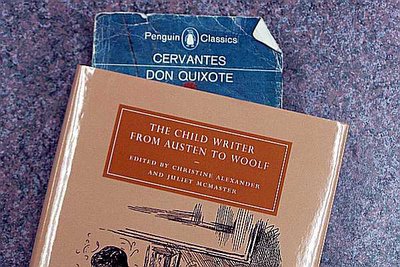Dust
Being hypersensitive to all things DQ (despite my distaste for ice cream – I actually use “the other DQ” as a landmark and find myself looking at the DQ buildings I would have totally ignored previously) alerts me to the fact that once you start to focus on something, it pops up everywhere. Does that mean that there is no such thing as coincidence? That coincidence is manufactured by a mind that has already created it and is actually seeking it?
Today it’s dust. I see dust everywhere. This is because we’re having an area of our basement excavated. The work started yesterday. We thought we were prepared. Rooms were cleared. Boxes packed. Garbage put out. But we weren’t prepared for the dust. Or, we were only prepared for a portion of the dust that we actually got and now, I see dust everywhere. It’s on my keyboard, my coffee cup, the conference table, the windowsill – all places far away geographically from the work site. Is it a mental thing? Am I just attuned to dust? Did I bring the dust with me, in my pockets, in my hair, on my shoes? I’m checking my shoes now and the bottoms don’t look very dusty but there does seem to be a thin film on the uppers…I’m brushing it off now…
In my reading of DQ, I’m into a longish chunk devoted to DQ & Sancho’s visit with the Duke and Duchess who have recently read the first book of DQ & Sancho’s adventures – The Ingenious Gentleman Don Quixote de la Mancha. As they know “of Don Quixote’s extravagances”, they decide to “fall in with his whimsies, to agree with him in all he said, and to treat him like a knight errant”. But they go further and actually manufacture and stage adventures which entangle both DQ and Sancho in (mostly) funny ways. The D&D understand the triggers, the cues that DQ and Sancho need to engage them in their own fantasies. Much is made, for example, of Sancho’s island governorship (which he covets) and of the transformation of Dulcinea del Toboso. So, DQ and Sancho live in a constructed series of adventures here at the D&D’s place, even as this constructed adventure is part of their “real” adventures embedded in Part II. Do the D&D just want to have some fun or do they want to ensure that DQ and Sancho make their mark on the D&D’s turf so that the D&D can become part of the second part of the story? I’m not through the adventure yet but it’s very curious…
Another page just peeled off the back of my disintegrating copy of DQ. One side is “Penguin Classics: Recent and Forthcoming Volumes” and includes The Psalms, A Nietzsche Reader and Cicero’s Letters to Atticus. The other is an ad for Two Spanish Picaresque Novels – Lazarillo de Tormes and The Swindler. The description makes them both sound like good reads: with “ingenious ruses”, the outwitting of masters, and “scatological adventure”.









